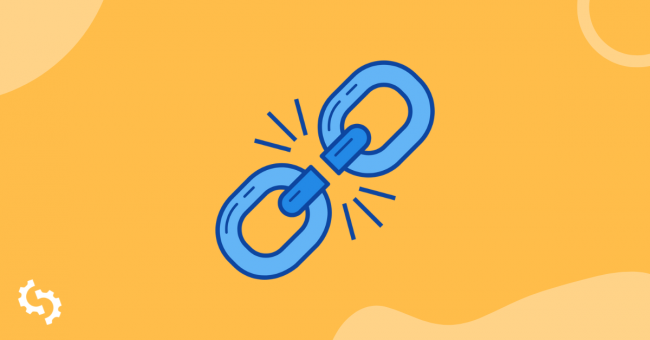Marketing
8 min read
How Does Broken Link Building Work, and Why is It Beneficial for SEO?


If you're looking to improve your website's SEO performance, broken link building is an effective and strategic method to consider. It not only helps you earn high-quality backlinks but also contributes to a better user experience for web visitors. In this article, we'll discuss how broken link-building works, why it’s so beneficial for SEO, and how you can incorporate this strategy into your digital marketing efforts.
Broken link building is an SEO strategy where you find broken links on other websites, create or suggest alternative content to replace those links, and request the website owner to link to your content instead. These broken links, often referred to as "dead links," lead to pages that no longer exist or display a 404 error. For example, imagine you’re reading an article that links to a resource, but when you click the link, you get a "Page Not Found" message. This is a broken link. It creates a poor experience for users and reflects poorly on the website hosting the link. You add value to their site while earning a backlink to your own by helping site owners fix these broken links.
Broken link building requires time, tools, and expertise. Professional services from agencies like Digital Web Solutions can simplify the process for you. These services often use advanced tools to identify broken links on relevant websites, craft suitable replacement content, and handle outreach to secure the backlink. You can save time and effort while ensuring that your broken link-building strategy is executed effectively by partnering with a link-building service.

Broken link building involves three main steps: identifying broken links, creating valuable replacement content, and reaching out to website owners.
The first step in broken link building is to find relevant broken links on websites within your niche or industry. Here’s how you can do it:
Once you've identified broken links, the next step is to create content that can serve as a replacement for the dead link. Keep these points in mind:
The final step is outreach. This involves contacting the website owner or editor and informing them about the broken link. Your message should be polite, concise, and helpful. Here’s what to include in your outreach email:
Now that you understand how broken link building works, let’s explore the many benefits it offers for SEO and your overall website performance.
Backlinks are a major ranking factor for search engines like Google. You can secure high-quality backlinks from authoritative websites by replacing broken links with your content. These links boost your domain authority and improve your rankings on search engine results pages (SERPs).
When reputable websites link to your content, it improves your website's credibility. Visitors are more likely to trust your brand, and search engines see your site as a reliable source of information.
Broken links disrupt the user experience, frustrating visitors and potentially driving them away. By helping website owners fix broken links, you improve the browsing experience for their audience, which reflects positively on your brand.
Broken link building is a collaborative process that benefits both parties. By reaching out with a helpful solution, you build goodwill and open the door to future partnerships or link-building opportunities.
When your content replaces a broken link on a niche-relevant website, it attracts targeted visitors who are genuinely interested in your topic. This not only increases traffic to your site but also improves engagement metrics like time on page and bounce rate.
Unlike manipulative link-building techniques, broken link-building is a white-hat SEO strategy. It aligns with search engine guidelines, ensuring that your website remains penalty-free while improving its rankings.
Finding the right opportunities is the foundation of a successful broken link-building strategy. If you focus on identifying high-quality, relevant broken links, your efforts will yield better SEO results. By focusing on the following methods, you’ll identify the best broken link-building opportunities that maximize your SEO success.
Start by identifying websites that operate within your industry or niche. Backlinks from these sites are more valuable because they align with your content and audience. For instance, if you run a tech blog, look for broken links on websites focused on technology, software, or gadgets. Tools like Ahrefs and SEMrush allow you to search for websites with topics relevant to your domain.
Competitor analysis is a great way to find broken link opportunities. Check the backlink profiles of your competitors to see if any of their referring links are broken. This not only provides a potential opportunity but also ensures you are targeting sites that already link to similar content.
Not all broken links are created equal. Prioritize links from websites with high domain authority (DA) or domain rating (DR). These links have a stronger impact on your SEO and can drive more significant traffic to your website. Use tools like Moz, Ahrefs, or SEMrush to evaluate the authority of the websites you're targeting.
Broken links on pages that receive significant traffic are more valuable because they can drive a larger audience to your site. By replacing broken links on these pages, you increase the chances of reaching a wider and more engaged audience.
Here are some practical tips to make your broken link-building efforts more effective:
While broken link building offers many benefits, it can also be challenging. Here are some common obstacles and how to address them:
Broken link building is a powerful SEO strategy that benefits both you and the website owners you collaborate with. Broken link building is a way to contribute to a better web experience for everyone. Creating high-quality replacement content and conducting thoughtful outreach can earn valuable backlinks that boost your website's authority and rankings. If you’re new to broken link-building or simply short on time, consider leveraging professional link-building services to simplify the process.
Be the first to post comment!